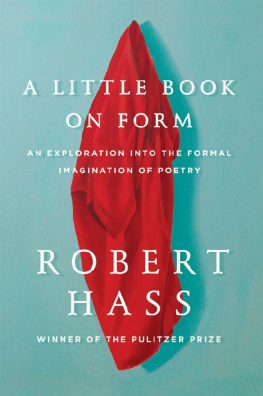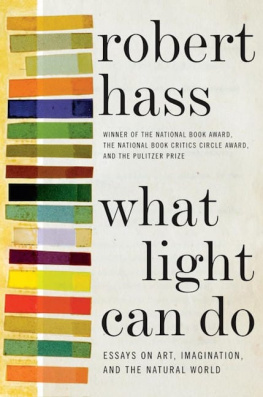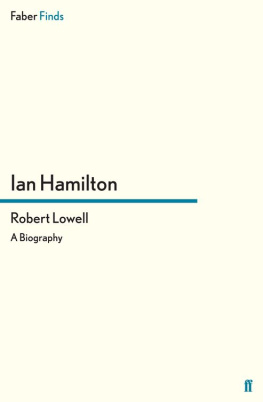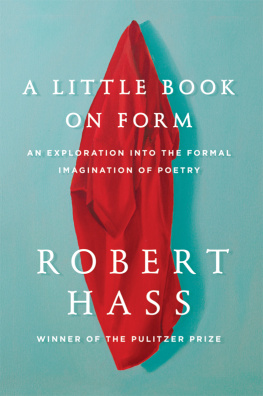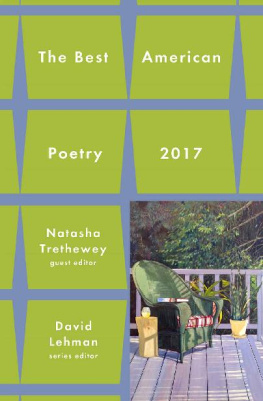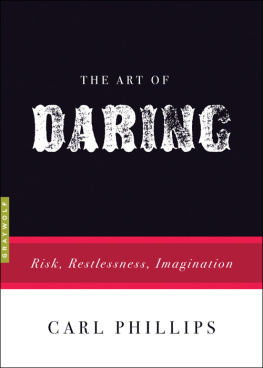To Connie Brothers
CONTENTS
Guide
This is a book about the formal imagination in poetry.
It began as a series of notes and reading lists for a seminar I was invited to teach at the University of Iowa Writers Workshop in the winter of 1995. The invitation was to teach a class on forms. When I looked at books on the subject, I saw that they mostly took form to mean traditional rules previous to compositionrules for the formation of the sonnet, for example, or the villanelle, and while the information in them was quite useful, it didnt seem to me to have too much to do with the way the formal imagination actually operates in poetry. It does not, for starters, address the formal principles, or impulses, that underlie the great majority of poetry in English and American literatures not written in these conventional forms.
It seemed possible to construct notes toward a notion of form that would more accurately reflect the openness and the instinctiveness of formal creation by starting with one line as the basic gesture of a poem, and then looking at two lines and their relation to each other as a form or a proposition of form, and then three lines as another, and four linestwo sets of twoas still another, inside an idea that from these basic forms all the others could be generated. The sonnet is two quatrains and two triplets if it is Italian, three quatrains and a couplet if it is English, and so on. As for genre, our sense of it in English has been increasingly restless since the middle of the eighteenth century. Nineteenth-century poets wrote metrical verse with great facility, butexcept for the romantic odeswere not inclined to think inside classical ideas of genre. Twentieth-century poets were attracted, some of them, to gaming formsthe sestina, the pantoumfor interesting reasons, but they were not inclined to write eclogues or odes or formal satires. Still, the essential expressive gestures inside those forms, forms that have held traditional shapes of grief, rage, longing, spite, adoration, have persisted, and it seemed that there could be ways of understanding the persistence of those shapes of thought and feeling. These were the impulses with which I began these notes, these and the feeling that we do not have a very good language for the ways in which it seems most interesting to think about form. Ive revised the notes slightly and added to them on subsequent visits to the workshop and updated the readings when a new book or essay appeared on some subjectthe ghazal or the sestina, for example. The notes are intended to be suggestive, not comprehensive. Im very much aware that they come from what I happen to have read or be reading and that other readers will bring other lists and perhaps better example drawn from other traditions to the issues of craft discussed here.
Two books in particular to be recommended that appeared in these years: Annie Finch, An Exaltation of Forms; Mark Strand and Eavan Boland, The Making of a Poem.
(I should also say that the notes were intended for mostly young poets entering a two-year period of intense reading and writing that was to give them a chance to develop their art, so it didnt seem unreasonable to propose that they might do a quick read through the history of the sonnet or of Harlem Renaissance experiments with the blues form. The class was three hours on an afternoon. For the second half of the class, I asked each student to make a presentation on an idea of form in some discipline or craft other than poetry. They approached this task in many ways, and their informal talks entered the conversation alongside the readings proposed here. One student taught the class to waltz. One played a recording of and analyzed the structure of a raga. One, working part-time as a dessert chef in a local restaurant, demonstrated the construction of an apple galette. There were talks on the formal ordering of 1970s disco albums, form in the photographs of Cartier-Bresson, the building of a wooden canoe, and of a computer program, the plots of films noir, and the architectural design of mosques.)
So we might begin with definitions:
* One meaning of form that has currency has the meaning traditional form, which usually means the use of rhyme and meter.
* Another meaning is that it refers to one of a number of traditional kinds of poems that apply particular rules of composition. As in the sonnet is a form.
* Another meaning is external shape.
* Another is the arrangement and relationship of basic elements in a work of art, through which it produces a coherent whole.
All four of these usages are common, useful, and none of them capture the nature of the formal imaginationthe intuitions that shape a work of artor the pleasure form gives to writer and reader. Closer might be:
* The way the poem embodies the energy of the gesture of its making.
This is near to the idea of form implied by the aesthetic of abstract expressionist paintingthe idea that whats on the canvas is what the painter did to it, using the materials he or she was using.
* * *
Further considerations from four thinkers, one fictional:
The energy of the gesture of its making: not far from the aesthetic James Joyce has Stephen Dedalus propound in Portrait of the Artist. Here, for example:
-To finish what I was saying about beauty, said Stephen, the most satisfying relations of the sensible must therefore correspond to the necessary phases of artistic apprehension. Find these and you find the qualities of universal beauty. Aquinas says: Ad pulcritudinem tria requiruntur, integritas, consonantia, claritas. I translate it so: Three things are needed for beauty, wholeness, harmony, and radiance. Do these correspond to the phases of apprehension? Are you following?
-Of course, I am, said Lynch. If you think I have an excrementitious intelligence run after Donovan and ask him to listen to you.
-Look at that basket, he said.
-I see it, said Lynch.
-In order to see that basket, said Stephen, your mind first of all separates the basket from the rest of the visible universe which is not the basket. The first phase of apprehension is a bounding line drawn about the object to be apprehended. An esthetic image is presented to us either in space or time. What is audible is presented in time, what is visible is presented in space. But temporal or spatial, the esthetic image is first luminously apprehended as self-bounded and self-contained upon the immeasurable background of space or time which is not it. You apprehend it as one thing. You see it as one whole. You apprehend its wholeness. That is integritas.
-Bulls eye! said Lynch, laughing. Go on.
-Then, said Stephen, you pass from point to point, led by its formal lines; you apprehend it as balanced part against part within its limits; you feel the rhythm of its structure. In other words, the synthesis of immediate perception is followed by the analysis of apprehension. Having first felt that it is one thing you feel now that it is a thing. You apprehend it as complex, multiple, divisible, separable, made up of its parts, the result of its parts and their sum, harmonious. That is consonantia.
-Bulls eye again! said Lynch wittily. Tell me now what is claritas and you win the cigar.
-The connotation of the word, Stephen said, is rather vague. Aquinas uses a term which seems to be inexact. It baffled me for a long time. It would lead you to believe he had in mind symbolism or idealism, the supreme quality of beauty being a light from some other world, the idea of which the matter was but a shadow, the reality of which it was but a symbol. I thought he might mean the claritas was the artistic discovery and representation of the divine purpose in anything or a force of generalization which would make the esthetic image a universal one, make it outshine its proper conditions. But that is literary talk. I understand it so. When you have apprehended that basket as one thing and have then analyzed it according to its form and apprehended it as a thing you make the only synthesis which is logically and esthetically permissible. You see that it is that thing which it is and no other thing. The radiance of which he speaks is the scholastic
Next page
